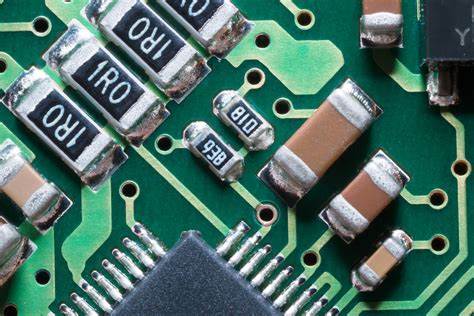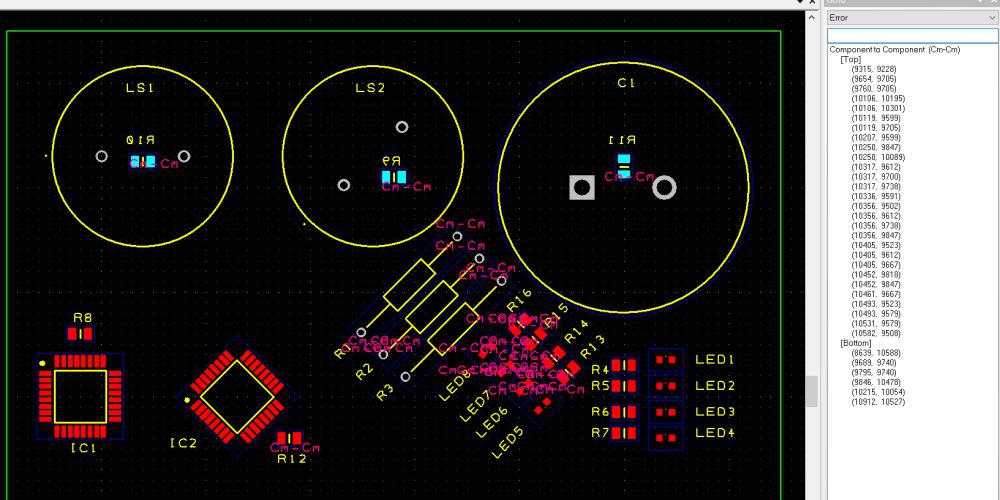Resistor matching is an essential aspect of analog layout design. It is crucial to ensure that the circuit’s performance is not affected by mismatches in the resistors. Resistor matching is the process of selecting and pairing resistors with similar values to minimize the effects of mismatch.
Mismatched resistors can cause significant variations in the circuit’s performance, such as gain and offset errors. These variations can lead to reduced accuracy, increased noise, and distortion in the output signal. Therefore, resistor matching is a critical step in analog layout design, especially in high-precision applications. In the next sections, we will explore the importance of resistor matching in analog layout design and the various techniques used to achieve it.

The Importance of Resistor Matching
Resistor matching is a crucial aspect of analog layout design, especially in high-precision circuits. Resistor matching refers to the process of selecting and placing resistors in a circuit such that their values are as close to each other as possible. The goal is to minimize the variation in resistor values, which can cause significant errors in circuit performance.
The importance of resistor matching lies in the fact that resistors are not perfect. There is always some degree of variation in their values, even when they are manufactured to the same specifications. This variation can be caused by a variety of factors, including temperature, manufacturing tolerances, and aging.
In high-precision circuits, even small variations in resistor values can result in significant errors in circuit performance. For example, in an amplifier circuit, resistor mismatch can cause distortion, reduced gain, and noise. In a voltage reference circuit, resistor mismatch can result in output voltage errors.
To minimize the effects of resistor variation, designers use various techniques to match resistors. These techniques include:
- Selecting resistors from the same batch or lot
- Measuring and selecting resistors with similar values
- Using trimming techniques to adjust resistor values
- Using resistor networks or arrays
In conclusion, resistor matching is a critical aspect of analog layout design. By minimizing the variation in resistor values, designers can ensure that their circuits perform as intended, especially in high-precision applications.
Resistor Matching Techniques
When designing analog circuits, it is important to match the values of resistors to ensure accurate performance. This section will discuss two common resistor matching techniques: series-parallel resistor matching and shunt resistor matching.
1.1. Series-Parallel Resistor Matching
Series-parallel resistor matching involves connecting multiple resistors in series and parallel to achieve a desired resistance value. This technique is commonly used when the required resistance value is not available in a single resistor.
To achieve accurate resistor matching, it is important to select resistors with similar values and tolerances. A tolerance of 1% is typically used for precision applications. Table 1 shows an example of series-parallel resistor matching.
| Resistor | Value (Ω) |
|---|---|
| R1 | 100 |
| R2 | 200 |
| R3 | 300 |
| R4 | 400 |
| R5 | 1000 |
| R6 | 2000 |
| Total | 3000 |
1.2. Shunt Resistor Matching
Shunt resistor matching involves connecting a resistor in parallel with another resistor to achieve a desired resistance value. This technique is commonly used when the required resistance value is not available in a single resistor.
To achieve accurate resistor matching, it is important to select resistors with similar values and tolerances. A tolerance of 1% is typically used for precision applications. Table 2 shows an example of shunt resistor matching.
| Resistor | Value (Ω) |
|---|---|
| R1 | 100 |
| R2 | 200 |
| R3 | 300 |
| R4 | 400 |
| R5 | 1000 |
| R6 | 2000 |
| Total | 83.33 |
In conclusion, resistor matching is an important aspect of analog circuit design. By using series-parallel and shunt resistor matching techniques, accurate resistor values can be achieved for precision applications.
Factors Affecting Resistor Matching

2.1 Temperature Coefficient of Resistance
Resistors are sensitive to temperature changes, and their resistance value can change as the temperature changes. This is known as the temperature coefficient of resistance (TCR). The TCR is typically expressed in parts per million per degree Celsius (ppm/°C). The TCR of a resistor can vary depending on the material used to make the resistor, the manufacturing process, and the operating temperature range. In analog layout, it is essential to use resistors with low TCR to ensure good matching.
2.2 Tolerance of Resistors
The tolerance of a resistor is the maximum deviation from the nominal resistance value. The tolerance is typically expressed as a percentage of the nominal resistance value. For example, a resistor with a 1% tolerance and a nominal resistance value of 10 kΩ can have a resistance value between 9.9 kΩ and 10.1 kΩ. In analog layout, it is essential to use resistors with tight tolerance to ensure good matching.
2.3 Manufacturing Variations
Resistors are manufactured using various processes, and the manufacturing process can affect the resistance value of the resistor. The manufacturing process can introduce variations in the resistor’s resistance value, which can affect the resistor’s matching. In analog layout, it is essential to use resistors from the same manufacturing batch to ensure good matching.
2.4 Power Dissipation
The power dissipation of a resistor can affect the resistor’s resistance value. When a resistor dissipates power, it generates heat, which can cause the resistor’s resistance value to change. In analog layout, it is essential to use resistors that can handle the required power dissipation to ensure good matching.
In summary, the temperature coefficient of resistance, tolerance, manufacturing variations, and power dissipation are critical factors that affect resistor matching in analog layout. It is essential to use resistors with low TCR, tight tolerance, from the same manufacturing batch, and that can handle the required power dissipation to ensure good matching.
Challenges in Resistor Matching

3.1. Layout Constraints
Resistor matching is a critical aspect of analog layout design. However, achieving precise matching is challenging due to various layout constraints. For example, the available area for the resistors is limited, and the resistors must be placed close to each other to minimize parasitic effects. Additionally, the resistor layout must be compatible with other circuit components, such as capacitors and transistors, which can further limit the available space.
3.2. Noise and Crosstalk
Another significant challenge in resistor matching is noise and crosstalk. Noise can cause variations in the resistance values, leading to mismatch errors. Crosstalk, on the other hand, can cause interference between the resistors, leading to deviations from the desired matching. These effects can be mitigated by proper shielding and isolation techniques, but they can still pose significant challenges in achieving precise resistor matching.
3.3. Parasitic Capacitance and Inductance
Parasitic capacitance and inductance are also major challenges in resistor matching. Capacitance can cause variations in the resistance values due to the charging and discharging of the parasitic capacitors. Inductance can cause variations in the resistance values due to the magnetic field generated by the current flowing through the resistors. These effects can be minimized by proper layout techniques, such as using guard rings and minimizing the length of the signal traces.
In summary, achieving precise resistor matching in analog layout design is a challenging task due to various layout constraints, noise and crosstalk, and parasitic capacitance and inductance. Proper layout techniques and shielding can help mitigate these effects, but achieving precise matching requires careful consideration and design.
Conclusion
In conclusion, resistor matching is an important aspect of analog layout design. As we have seen, resistor matching can have a significant impact on the performance of analog circuits such as amplifiers and filters.
Matching can be achieved through various techniques such as layout symmetry, dummy structures, and trimming. However, each technique has its own advantages and disadvantages, and the choice of technique depends on the specific requirements of the circuit.
It is important to note that resistor matching is not the only factor that affects the performance of analog circuits. Other factors such as noise, power supply rejection, and temperature coefficient also play a critical role. Therefore, it is necessary to consider all these factors during the design process.
Finally, it is important to verify the matching performance of the resistors during the testing phase of the circuit. This can be achieved through various measurements such as the offset voltage and gain error. By ensuring that the resistors are well-matched, we can achieve better performance and reliability of the analog circuit.
In summary, resistor matching is a critical aspect of analog layout design that should not be overlooked. By using appropriate techniques and verifying the matching performance, we can achieve better performance and reliability of the analog circuit.

